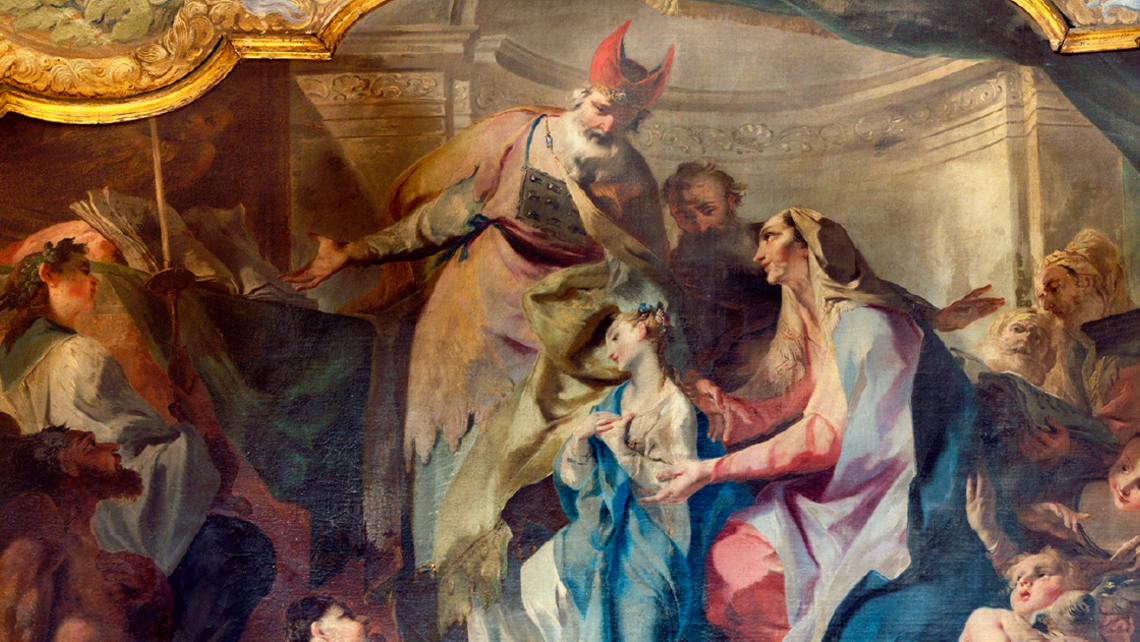
The Presentation of Mary
What is the Presentation of Mary?
Before Mary was born, her parents received a message from heaven. Joachim and Anna, who had long been childless, would finally bear a child. In an act of free will, obedience, and trust in God’s plan for the salvation of mankind, Mary’s parents offered their most precious only child to God. Some sources put Mary’s age at only 3 years when her parents brought her to the Temple to consecrate her to the Lord.
What we are celebrating on the Feast of the Presentation of Mary is that God chose to dwell in Mary in a special and significant way. Mary, in response, put herself wholly in the service of the Lord. Just as Mary entered the Temple with her parents and was offered to the Lord, so are we presented to the Lord through Baptism. At Baptism, we become the temple of the living God.
What is the source of the story?
The events of the Presentation of the Blessed Virgin as a child by her parents in the Temple in Jerusalem are not found in Scripture.
Rather, the modern feast day comes from an old tradition in the Church whose origin is based on the apocryphal Infancy Gospel of James, more commonly known as the Protoevangelium of James, written around 200 AD with narratives on the life and virginity of Mary and the birth of Jesus:
When she was a year old, Joachim made a great feast, and invited the priests, and the scribes, and the elders, and all the people of Israel. And Joachim brought the child to the priests; and they blessed her, saying: O God of our fathers, bless this child, and give her an everlasting name to be named in all generations. And all the people said: So be it, so be it, amen. And he brought her to the chief priests; and they blessed her, saying: O God most high, look upon this child, and bless her with the utmost blessing, which shall be forever.
History of the Feast
The feast day for the Presentation of Mary is November 21st. This feast dates back to the 6th Century in the East, originating in Jerusalem with the building of a basilica near the ruins of the Temple.
The celebration of the feast is first documented in the 11th century by the Byzantine Catholic Church. In the 15th Century, Pope Gregory XI introduced it into the Roman Catholic Church in the West.
The feast had a shaky history in the Roman Church: Pope Pius V removed it from the Tridentine calendar in the mid-16th Century, but it was reestablished by Pope Sixtus V in 1585. It was included as a “memorial” in Pope St. Paul VI's liturgical reforms of 1969. In the Byzantine East, the feast has always been numbered as one of the Twelve Great Feasts.
Today it is still celebrated in commemoration of Mary’s purity and the faith of her parents.
Significance
Joachim and Anna serve as a holy example and inspiration to Christian parents to present their children to the Lord through the Sacrament of Baptism.
Mary mirrors Christ in all things, including her feast days. We celebrate Mary’s nativity to mirror our celebration of Jesus’ Nativity. We celebrate Mary’s Presentation in the Temple to mirror Jesus' own Presentation. We celebrate Mary’s Assumption to mirror Jesus’ own Ascension.
Once again, as with the Mysteries of the Rosary, we look at feast days such as the Presentation of Mary and appreciate that both Mary and Jesus lived out their entire lives as examples of holiness, humility, and trust in the Lord.
Don't Miss Our Rosary Resources


